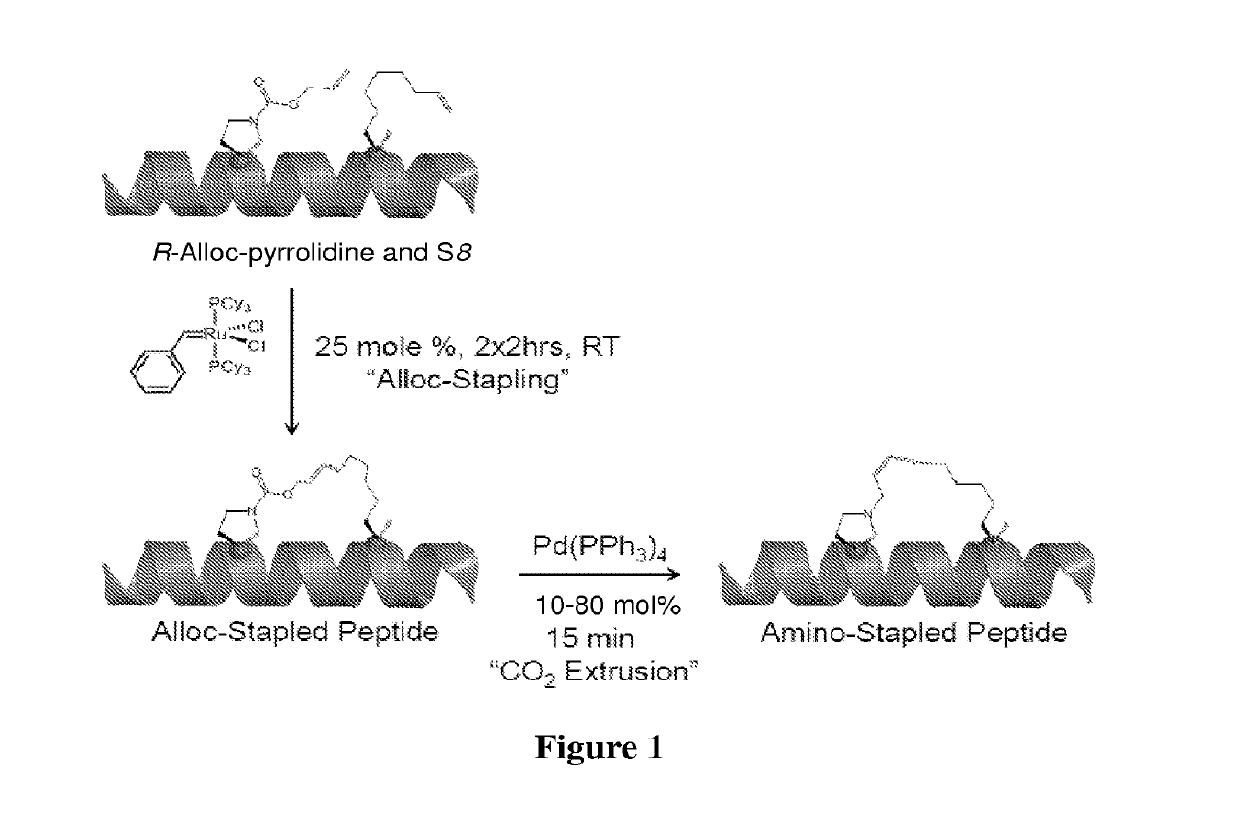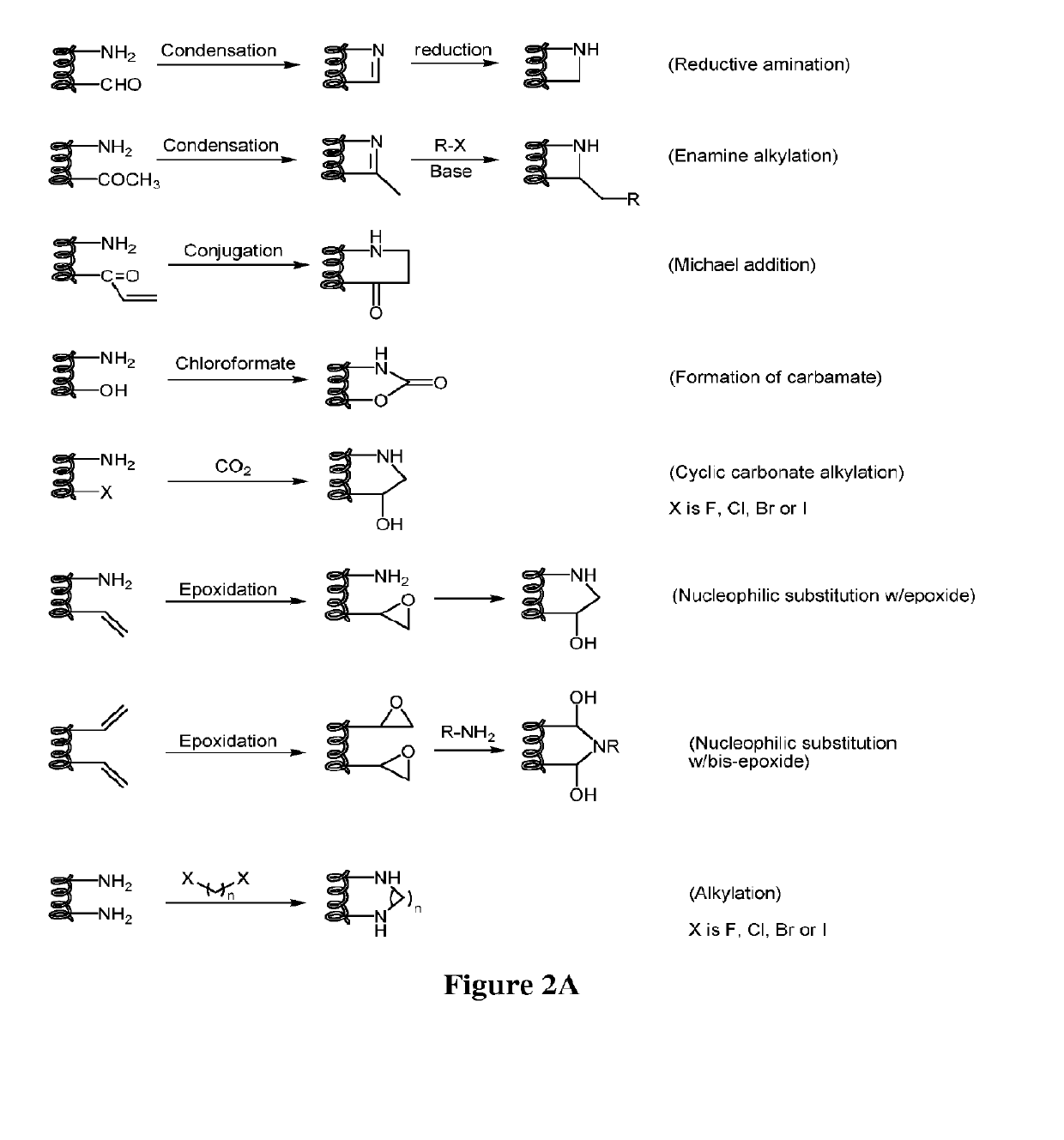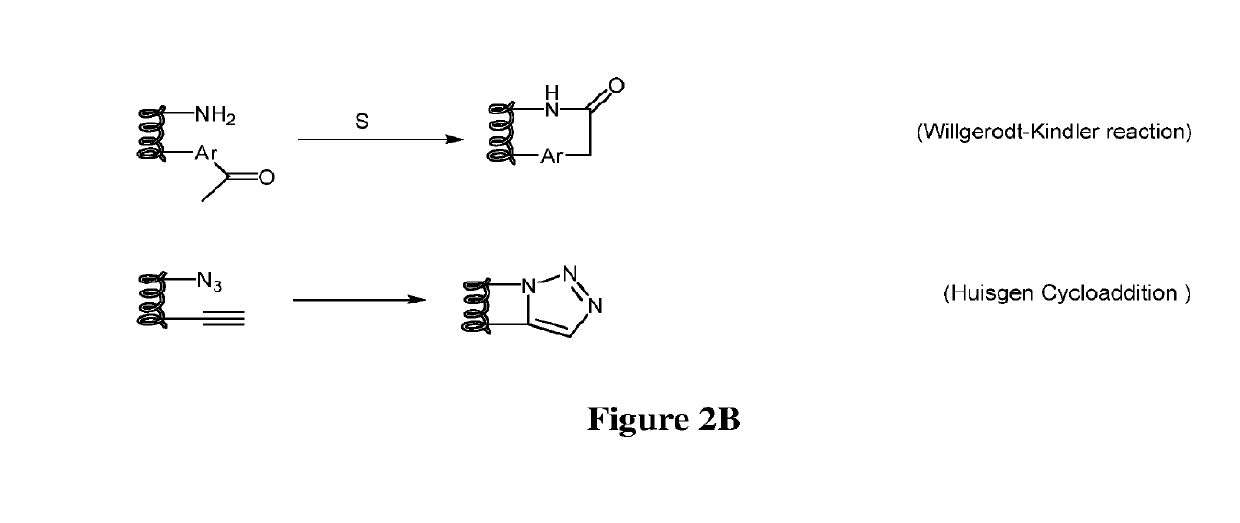Stapled and stitched polypeptides and uses thereof
a technology of polypeptides and polypeptides, which is applied in the field of stitched polypeptides, can solve the problems of high susceptibility to proteolytic degradation
- Summary
- Abstract
- Description
- Claims
- Application Information
AI Technical Summary
Benefits of technology
Problems solved by technology
Method used
Image
Examples
example 1
[0443]Preparation of amino acid 1 is shown in Scheme 1:
Synthetic Procedures
[0444]
[0445]100 g (0.543 mol) of 1 (100 g, 5.4 mol) was taken up in THF (1000 mL) and cooled to −78° C. 228 mL (0.570 moles) of n-BuLi (2.5M in THF) was added dropwise over 30 minutes. Then the solution was stirred vigorously for an additional 30 minutes. 81 g of methyl iodide (0.57 mol) was diluted to 250 mL with THF and cooled to −78° C. The methyl iodide was then added dropwise over 30 minutes. Following completion of the addition of methyl iodide, the reaction was stirred at −78° C. for 2 hours. 1 L of diethyl ether was then added to the mixture, followed by 500 mL of H2O. The reaction was then warmed to room temperature. The aqueous layer was extracted multiple times with diethyl ether and the organic layer were combined, washed with saturated sodium thiosulfate, once with brine, and dried over MgSO4. The organics were concentrated under vacuum to give residue which was purified by chromatography with gr...
example 2
[0453]Preparation of amino acid 2 is shown in Scheme 2:
Synthetic Procedures:
[0454]
[0455]78.5 g (396.42 mmol) of synthetic intermediate 2 was taken up in 1.1 L of THF and cooled to −78° C. 436 mL (436 mmol) of n-BuLi (2.5 M in Hexanes) was then added dropwise over 10 minutes, and the reaction was then stirred at −78° C. for an additional 60 minutes. 203 g (1.189 mol) of dibromomethane was taken up in 200 mL of THF and cooled to −78° C. The solution of dibromomethane in THF was then added to the reaction dropwise over 40 minutes. After completion of the addition, the reaction was stirred while allowing it to warm to −20° C. over 3 hours. At the end of this three hours, TLC analysis indicated the reaction was virtually complete and diethyl ether and H2O were added and the reaction was warmed to room temperature. The organics were collected, and the aqueous layer contained no product. The organics were then washed with H2O, brine, dried over MgSO4 and concentrated under reduced pressure...
example 3
[0463]Preparation of amino acids 3 and 4 is shown in Scheme 3:
Synthetic Procedure:
[0464]
[0465]To a solution of HARV-120823-1 (80 g, 0.432 mol) and NH4OAc (46.61 g, 0.605 mol) in MeOH (1000 mL) was added NaCN (21.71 g, 0.432 mol) at room temperature. After the addition, the mixture was stirred at room temperature overnight. TLC (Petroleum ether / EtOAc=3 / 1) showed the reaction was complete. The mixture was concentrated and water (300 mL) was added. The mixture was extracted with DCM (3*450 mL). The combined organic layer was washed with brine, dried over Na2SO4 and concentrated under reduced pressure to give crude HARV-120823_2. The crude product was dissolved HCl aqueous (3 to adjust pH=8 and extracted with DCM. The organic layer was dried over Na2SO4 and concentrated under reduced pressure to give pure product HARV-120823_2 (85 g, yield: 93%). 1HNMR (CDCl3, 400 MHz, WH10085-001-1A): δ 3.76-3.73 (m, 1H), 3.61-3.43 (m, 3H), 2.34-2.32 (m, 1H), 1.82 (s, 2H), 1.45 (s, 9H).
[0466]To a mixtu...
PUM
 Login to View More
Login to View More Abstract
Description
Claims
Application Information
 Login to View More
Login to View More - R&D
- Intellectual Property
- Life Sciences
- Materials
- Tech Scout
- Unparalleled Data Quality
- Higher Quality Content
- 60% Fewer Hallucinations
Browse by: Latest US Patents, China's latest patents, Technical Efficacy Thesaurus, Application Domain, Technology Topic, Popular Technical Reports.
© 2025 PatSnap. All rights reserved.Legal|Privacy policy|Modern Slavery Act Transparency Statement|Sitemap|About US| Contact US: help@patsnap.com



